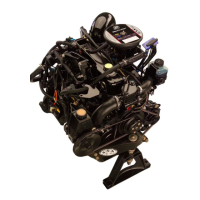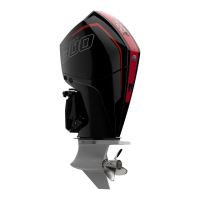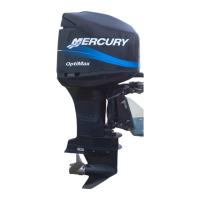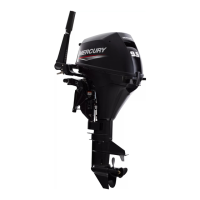ELECTRICAL - 2B-190-826148R2 MARCH 1997
Specifications
STARTING
SYSTEM
Manual Start
Electric Start
Starter Draw (Under Load)
(No Load)
Recoil
12 Volt
95 Amperes
20 Amperes
CHARGING
SYSTEM
Alternator Output
– Electric Start
– Manual Start
Single Phase (12 Pole)
14 Amperes @ 5000 RPM
9 Amperes @ 3000 RPM
Special Tools
1. Volt/Ohm/DVA Meter 91-99750
Battery
Precautions
When charging batteries, an explosive gas mixture
forms in each cell. A portion of this gas escapes thru
holes in vent plugs and may form an explosive atmo-
sphere around battery if ventilation is poor. This ex-
plosive gas may remain in or around battery for sev-
eral hours after it has been charged. Sparks or
flames can ignite this gas and cause an internal ex-
plosion which may shatter the battery.
The following precautions should be observed to pre-
vent an explosion.
1. DO NOT smoke near batteries being charged or
which have been charged very recently.
2. DO NOT break live circuits at terminals of batter-
ies because a spark usually occurs at the point
where a live circuit is broken. Always be careful
when connecting or disconnecting cable clamps
on chargers. Poor connections are a common
cause of electrical arcs which cause explosions.
3. DO NOT reverse polarity of battery cables on bat-
tery terminals.
CAUTION
If battery acid comes into contact with skin or
eyes, wash skin immediately with a mild soap.
Flush eyes with water immediately and see a doc-
tor.
Recommended Battery
A 12 volt battery with a “Cold Cranking Amperage”
rating minimum of 465 amperes.
Operating Engine Without Battery
If desired (or in an emergency), engines equipped
with an alternator can be started and operated with-
out a battery (either disconnected or removed) if
“WARNING”, below, is followed.
WARNING
Before operating engine with battery leads dis-
connected from battery, disconnect stator leads
(Yellow) from rectifier. Insulate (tape) stator lead
ring terminals.
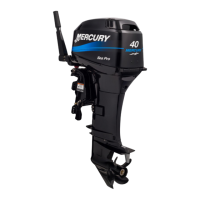
